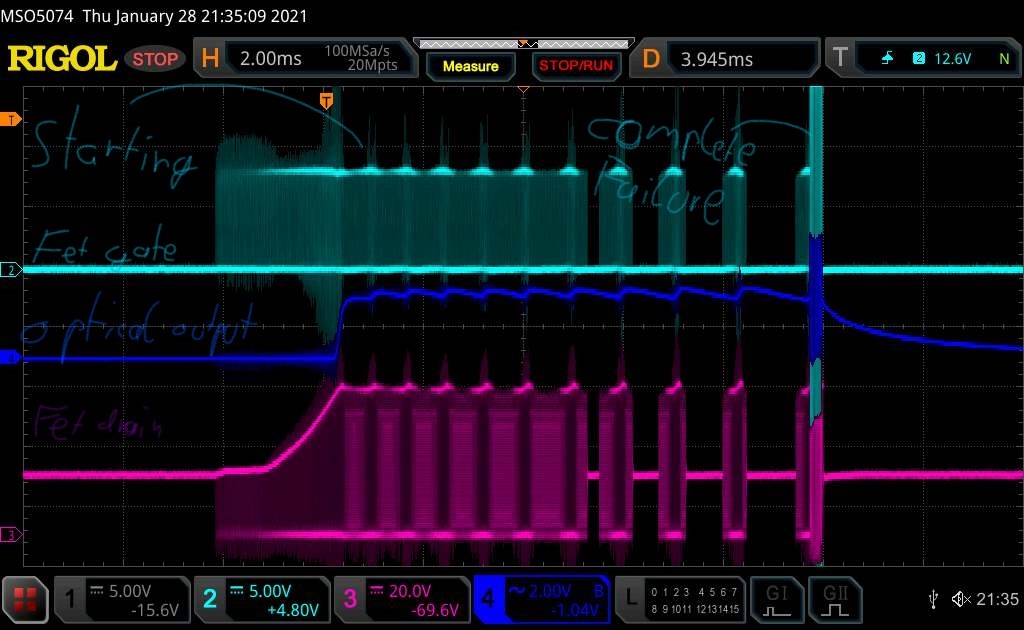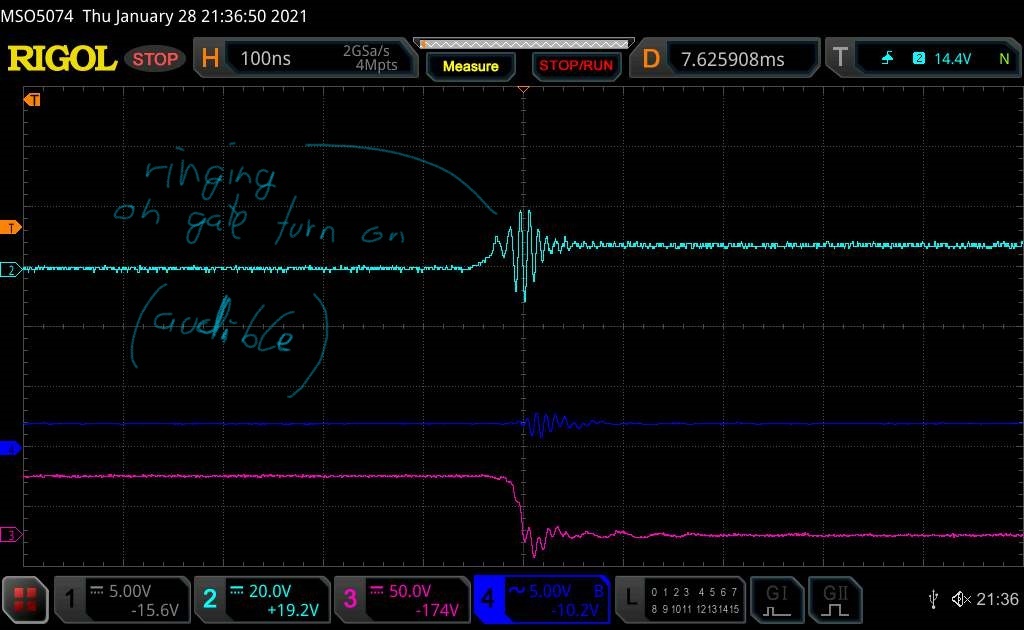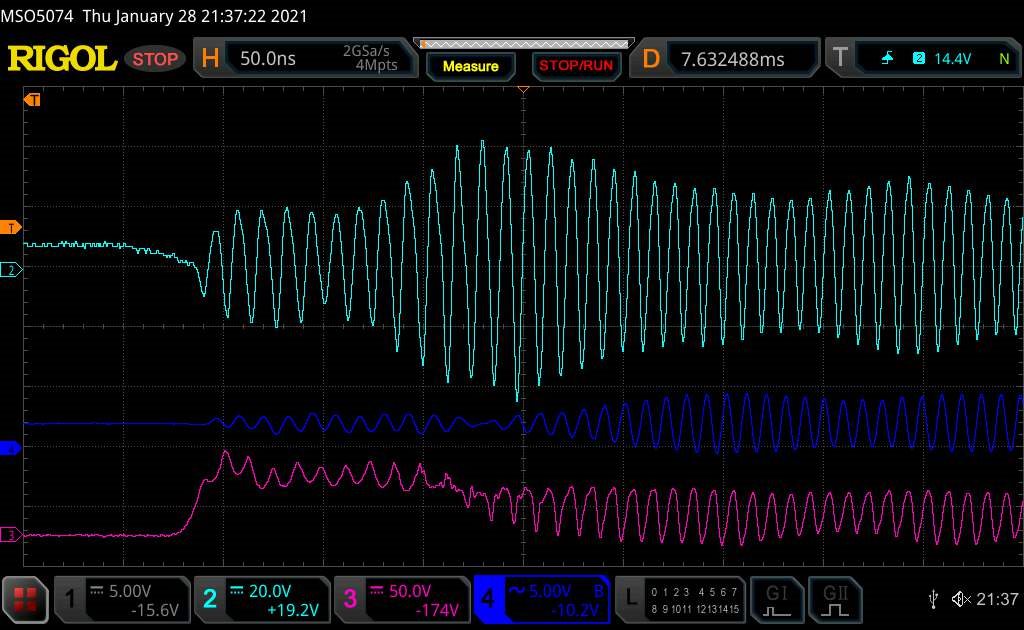I'm building a compact CC/CW led lamp with the TPS92682 as the driver.
Design specs are:
VIn = ~24V (6s lipo pack) ; VOut(max) = 55V (marginal, I know) ; IOut(max) = 2A ; POut(max) = 100W per ch
I have calculated the compensation network parameters after exporting the PDF: Chf = 3.3nF ; Ccomp = 10nF ; Rcomp = 680ohm.
I am encountering a very weird behavior at higher output current settings (>20W), where the gate of the mosfet starts oscillating at >50MHz with 90Vpp (see attached images).
The oscillations start appearing at gate turn on and off for ~3 cycles (above 15W output), but eventually become permanent, killing the mosfets in the process (in the pictures OVP kicked in and it saved the fet)
Has anybody encountered something like this before?
Long time base view from startup to death
The problem starting
Failure
Schematic and pcb CC-CW Lamp.pdf





